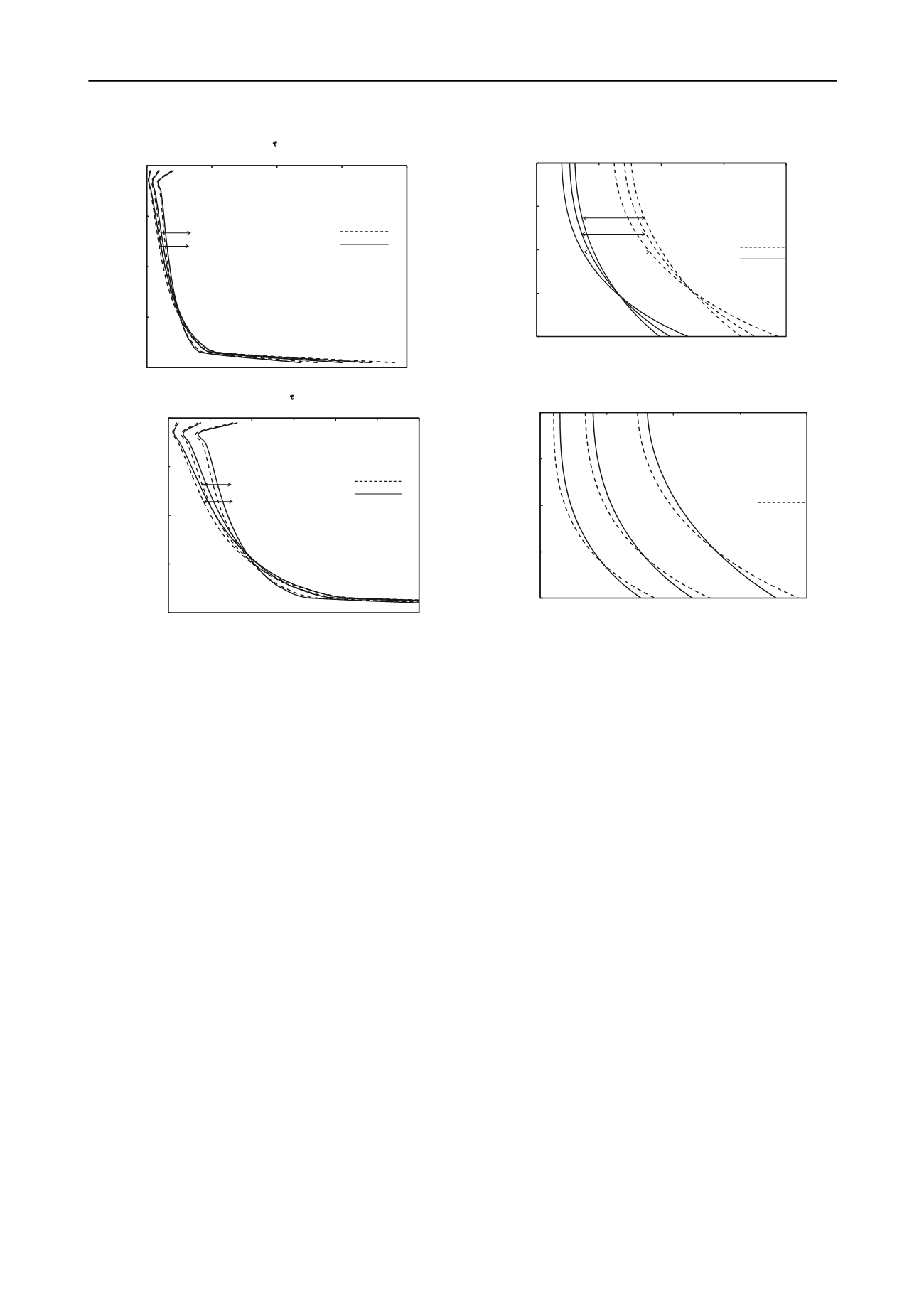
2624
Proceedings of the 18
th
International Conference on Soil Mechanics and Geotechnical Engineering, Paris 2013
0.5
1
s
=0
0
0.5
1
0
4
8
z/L
*
gp
=0
gp
=0.5
(a)
0.5
1
s
=0
0
0.5
1
0
1
2
3
z/L
*
gp
=0
gp
=0.5
(b)
Fig. 7 Normalized shear stress,
*
vs. Depth, z/L for L/d = 10,
K=50 & ν
s
=0.5 – (a) Effect of
s
&
gp
.(b) Enlarged at top.
gp
=0
0.5
1
0
0.5
1
0.75
1.35
1.95
z/L
I
U
s
=0
s
=0.5
Fig. 8 Normalized displacement coefficient, I
U
vs. Depth, z/L for
L/d=10, K=50 & ν
s
=0.5 – Effects of
s
&
gp
.
s
=0
0.5
1
0
0.5
1
0.65
1.3
1.95
z/L
I
U
gp
=0
gp
=0.5
Fig. 9 Normalized displacement coefficient, I
U
vs. Depth, z/L for
L/d=10, K=50 & ν
s
=0.5 – Effect of
gp
&
s
.
5 REFERENCES
The variations of normalized tip displacements with depth
for
s
= 0 (E
s
constant with depth) and 0.5 are presented in
Figure 8 for L/d=10, K=50, ν
s
=0.5 and
gp
=0, 0.5 and 1. The
displacement coefficients decrease with
gp
at the tip, and
increase at the top with
gp
for
gp
increasing from 0 to 1. The
variation of I
U
with depth is relatively large for smaller values of
gp
compared to that for
gp
=1. The displacement coefficient at
the tip decreases from 1.91 to 1.47 for
s
=0 and from 1.732 to
1.34 for
s
=0.5. I
U
decreases by about 30% for
s
=0.5 in
comparison to that for
s
=0 (homogenous soil).
Kumar P., Ranjan G. & Saran S. (2004). Granular Pile System for
Strengthening of Weak Sub-Soils –A Field Study. International
Conf. on Geosynthetics and Geoenv. Engg, Bombay, 217-222.
Lillis, C., Lutenegger, A.J & Adams, M. (2004). Compression and
Uplift of Rammed Aggregate Piers in Clay. Geosupport:
ASCE/GEO Geotechnical Special Publication no. 14, 497-507.
Madhav, M.R., Vidyaranya, B. & Sivakumar, V. (2008). Linear
Analysis and Comparison of Displacements Granular Pile Anchors.
J. Ground Improvement, Issue 161, 31- 41.
The influence of
gp
, the rate of increase of deformation
modulus of granular material with depth on the variations of the
displacement coefficients, I
U
with depth for varying
s
from 0
to 1, L/d=10, K=50 and ν
s
=0.5 is presented in Figure 9. The
displacement coefficient, I
U
, for
s
=0, at the tip decreases from
1.91 to 1.8 and increases from 1.12 to 1.17 for
gp
= 0 and 0.5
respectively. Similarly for
s
=0.5 and 1, the displacements at
the tip decrease from 1.47 to 1.39 and 1.14 to 1.10 while at the
top they increase from 0.87 to 0.90 and 0.71 to 0.74 for
gp
= 0
& 0.5 respectively.
Phanikumar, Sharma, R.S., Srirama Rao, A. & Madhav M.R. (2004).
Granular Pile Anchor Foundation (GPAF) System for Improving
the Engineering Behavior of Expansive Clay Beds. Geotechnical
Testing J., ASTM, Vol.27(3), 1-9.
Poulos, H.G. & Davis, E.H. (1980). Pile Foundation Analysis and
Design. John Wiley and Sons, New York, 397.
White, D., Wissmann, K., & Lawton, E. (2001). Geopier Reinforcement
for Transportation Application. Geotechnical News : 63-68.
4 CONCLUSION
Analysis of the GPA under the influence of the non-
homogeneities of the deformation moduli of the soil and
granular material is presented in this paper. The shear stresses
near the top of GPA are significantly less for
s
increasing with
depth. Displacements reduce for the deformation moduli
parameters of soil and granular material increasing linearly with
depth (
s
=0.5 &
gp
=0.5). The displacements reduce by 30%
with depth for
s
=0.5 and 6% for
gp
=0.5 in comparison to
those for
s
=0 and
gp
=0 respectively.


